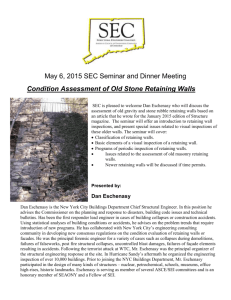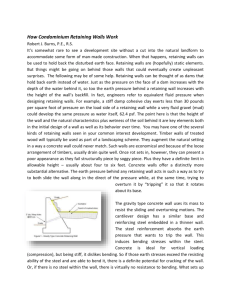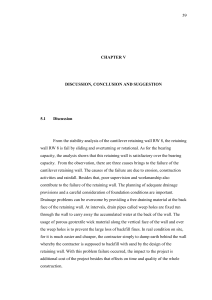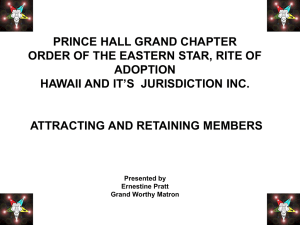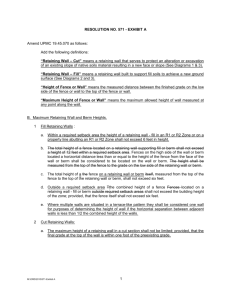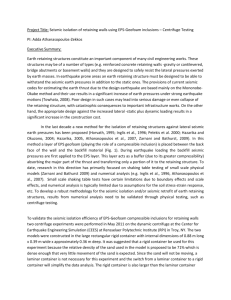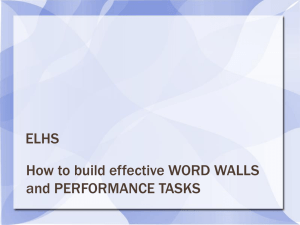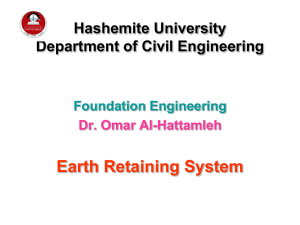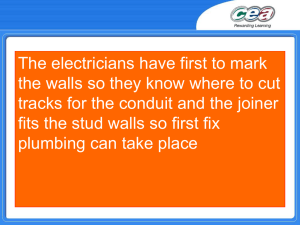Gravity/Cantilever Walls - Learn Civil Engineering
advertisement
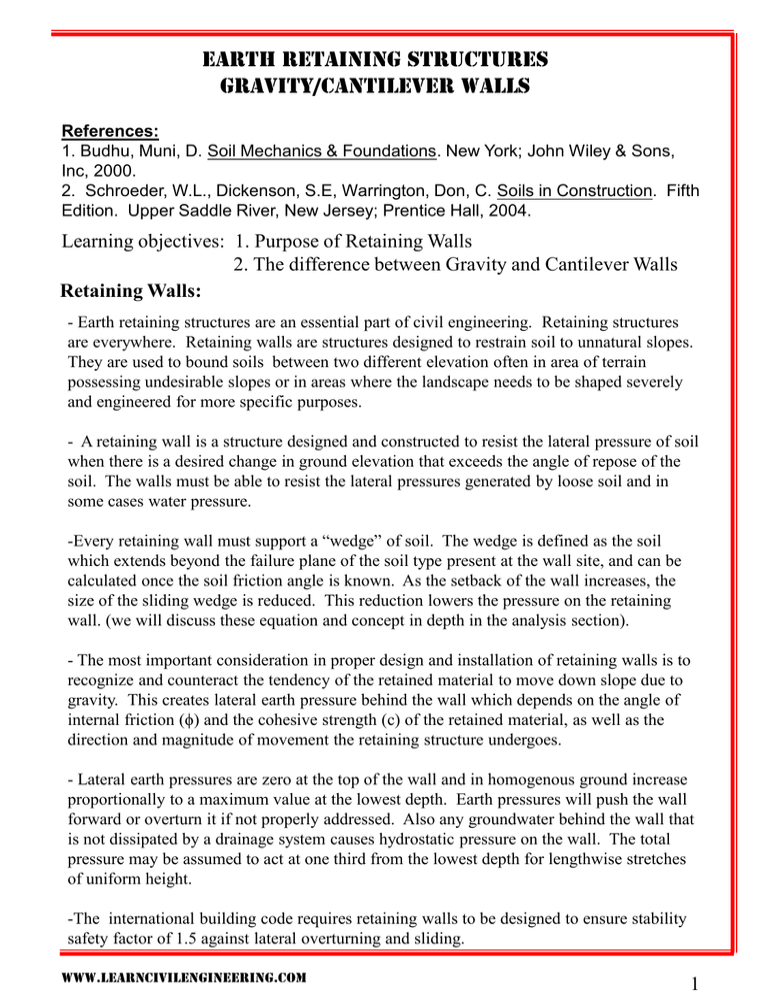
Earth retaining structures Gravity/Cantilever walls References: 1. Budhu, Muni, D. Soil Mechanics & Foundations. New York; John Wiley & Sons, Inc, 2000. 2. Schroeder, W.L., Dickenson, S.E, Warrington, Don, C. Soils in Construction. Fifth Edition. Upper Saddle River, New Jersey; Prentice Hall, 2004. Learning objectives: 1. Purpose of Retaining Walls 2. The difference between Gravity and Cantilever Walls Retaining Walls: - Earth retaining structures are an essential part of civil engineering. Retaining structures are everywhere. Retaining walls are structures designed to restrain soil to unnatural slopes. They are used to bound soils between two different elevation often in area of terrain possessing undesirable slopes or in areas where the landscape needs to be shaped severely and engineered for more specific purposes. - A retaining wall is a structure designed and constructed to resist the lateral pressure of soil when there is a desired change in ground elevation that exceeds the angle of repose of the soil. The walls must be able to resist the lateral pressures generated by loose soil and in some cases water pressure. -Every retaining wall must support a “wedge” of soil. The wedge is defined as the soil which extends beyond the failure plane of the soil type present at the wall site, and can be calculated once the soil friction angle is known. As the setback of the wall increases, the size of the sliding wedge is reduced. This reduction lowers the pressure on the retaining wall. (we will discuss these equation and concept in depth in the analysis section). - The most important consideration in proper design and installation of retaining walls is to recognize and counteract the tendency of the retained material to move down slope due to gravity. This creates lateral earth pressure behind the wall which depends on the angle of internal friction (ϕ) and the cohesive strength (c) of the retained material, as well as the direction and magnitude of movement the retaining structure undergoes. - Lateral earth pressures are zero at the top of the wall and in homogenous ground increase proportionally to a maximum value at the lowest depth. Earth pressures will push the wall forward or overturn it if not properly addressed. Also any groundwater behind the wall that is not dissipated by a drainage system causes hydrostatic pressure on the wall. The total pressure may be assumed to act at one third from the lowest depth for lengthwise stretches of uniform height. -The international building code requires retaining walls to be designed to ensure stability safety factor of 1.5 against lateral overturning and sliding. www.learncivilengineering.com 1 Earth retaining structures Gravity/Cantilever walls -There are many types of retaining walls but the only ones we are focusing on are Gravity and Cantilever type walls. - Gravity retaining walls use the pure weight of the retaining wall holds the soil in place. Gravity walls are made of rock, concrete, and masonry. Currently, concrete is the most common material used to construct gravity walls. These walls can pivot and topple relatively easily, as the internal leverage of the earth pressure is very high. Some example are below. Earth Pressure vector Reactive Force vector Gravity vector www.learncivilengineering.com 2 Earth retaining structures Gravity/Cantilever walls - Cantilevered retaining walls are made from an internal stem of steel-reinforced, cast-inplace concrete or mortared masonry (often in a shape of an inverted T). These walls cantilever loads (like a beam) to a large , structural footing, converting horizontal pressures from behind the wall to vertical pressures on the ground below. Sometimes cantilevered walls are buttessed on the front, or include a conterfort on the back, to improve their strengh resisting high loads.use the pure weight of the retaining wall holds the soil in place. Some example are below. The cantilever wall uses the same earth pressure trying to topple it, to stabilize itself with a second lever arm. Earth Pressure vector Reactive Force vector Reactive Force vector Gravity vector The next section ‘stability analysis’ will go into how to solve each type of problem for stability and Factor of safety. www.learncivilengineering.com 3
